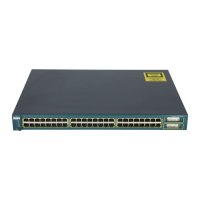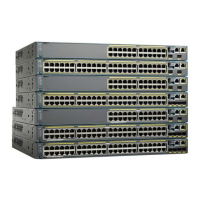130 Cisco LAN Switching Configuration Handbook
e. Repeat Steps 1b, 1c, and 1d until you are at the root.
How will you know when you have reached the root bridge? The local BID will
be identical to the root bridge ID, and the root cost will be 0.
2. Draw out the active topology from the top down.
Beginning at the root bridge, look for other switches that are participating in the
spanning tree for a specific VLAN.
a. Identify other neighboring switches:
(exec) show cdp neighbor detail
Every neighbor can be identified by name, IP address, and connecting port.
There will usually be more neighbors listed on switches that are toward the core
layer and fewer neighbors on the access layer.
b. Identify the BID, the root and designated ports, and their costs:
(exec) show spanning-tree brief | begin VLANvlan
The BID and the root port will be listed first. The switch ports on VLAN number
vlan will be listed, along with their STP states and port costs. The designated
ports are the ones marked in the forwarding state.
c. Identify the blocking ports:
(exec) show spanning-tree vlan vlan | include BLOCKING
d. Move to a neighboring switch and repeat Steps 2a through 2c.
Further Reading
Refer to the following recommended sources for further information about the topics
covered in this chapter.
802.1D MAC bridges, IEEE, at http://www.ieee802.org/1/pages/802.1D.html.
802.1s Multiple Spanning Trees, IEEE, at http://www.ieee802.org/1/pages/802.1s.html.
Boyles, Tim and David Hucaby. CCNP Switching Exam Certification Guide. Cisco
Press, ISBN 1-58720-000-7.
Clark, Kennedy and Kevin Hamilton. Cisco LAN Switching. Cisco Press, ISBN 157870-
094-9.
Perlman, Radia. Interconnections: Bridges, Routers, Switches, and Internetworking
Protocols. Addison-Wesley, ISBN 0-20163-448-1.
Understanding and Configuring the Cisco Uplink Fast Feature at
http://www.cisco.com/warp/customer/473/51.html.
Understanding Spanning Tree Protocol’s Backbone Fast Feature at
http://www.cisco.com/warp/customer/473/18.html.

